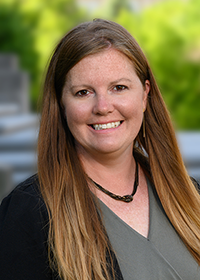
Recently, an Australian study identified one potential biomarker for sudden infant death syndrome, known as SIDS. However, experts caution that this is just one piece of the puzzle. The study did not identify the cause of SIDS but instead reported a possible biomarker that may be linked to some SIDS cases.According to Brittany Waggoner, IHA's maternal and infant quality improvement advisor, the study used a very small sample size with overlapping results. Further, Waggoner cautioned that there is currently no test for this biomarker.
“Past studies have identified possible genetic links and biomarkers for SIDS, and over time, none of them have resulted in effective prevention strategies," said Waggoner. “As with any study, more careful research is needed to validate the results."
Nearly 3,400 babies die from SIDS in the United States each year. SIDS typically occurs when a child is sleeping. Experts have speculated that the disease is associated with problems in the part of an infant's brain that controls breathing and waking. There is no immediate or obvious cause of death, according to the US Centers for Disease Control and Prevention, and it is impossible to know which babies are even at risk.

“News coverage and social media have exaggerated the study's findings, and my fear is that this may cause some parents to lose track of proven risk factors for SIDS that are within their control, such as ensuring that infants are not exposed to tobacco smoke and that they are put to sleep on their back, with firm bedding and no soft bumpers or pillows," said Waggoner.
“IHA's goal is to partner with Indiana's delivering hospitals to disseminate the correct messaging and ensure that patients are being educated on appropriate safe sleep environments prior to discharge."
To that end, IHA's Safe Infant Sleep Toolkit is available to members to help raise awareness among staff, patients, and families of sleep-related infant deaths. The toolkit can be found here.
The Indiana Department of Health and the American Academy of Pediatrics also have resources on their websites to learn more about infant safe sleep. Please click here and here for more information.
About SIDS:
- Sudden Unexpected Infant Death (SUID) is the third leading cause of death for infants in Indiana, and the second leading cause of death for Black infants in Indiana. These deaths occur in sleep environments, and most of these deaths are preventable.
- Sudden Infant Death Syndrome (SIDS) is just one type of SUID, and it rarely happens.
- The most common causes of sleep-related infant deaths are suffocation events due to unsafe sleep environments. We know what causes these deaths, and we know how to prevent them.
- To reduce the risk of an infant dying during sleep, it is important to create a safe sleep environment where the baby sleeps alone, on their back, and in a crib without any soft objects, blankets, pillows, or toys. Babies should never sleep in the same bed as adults or other children, and they should not sleep on chairs or couches.
- The recent study does not change the importance of consistently practicing safe sleep, at night and for every nap.
